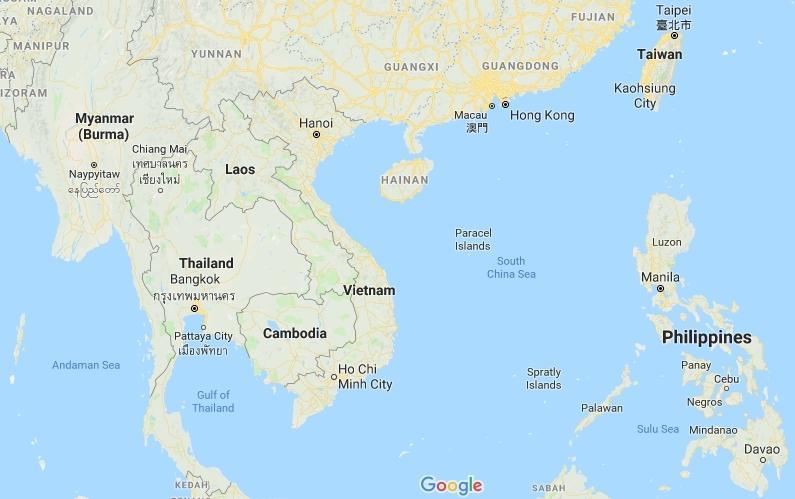Offshore Wind: A Critical Analysis Of Economic Viability

Table of Contents
High Upfront Capital Costs and Financing Challenges
The substantial initial investment required for offshore wind projects presents a major hurdle to their widespread adoption. These high upfront costs stem from several key factors:
The Cost of Construction and Installation
- Specialized Equipment: Offshore wind farm construction demands specialized equipment, including massive floating platforms, heavy-lift vessels, and advanced installation techniques. These specialized assets command high costs, significantly impacting the overall project budget. The need for cutting-edge technology often means higher initial investment compared to onshore wind projects.
- Site Surveys and Permits: Extensive site surveys, environmental impact assessments, and complex permitting processes add considerable expense to the pre-construction phase. Navigating environmental regulations and securing necessary approvals can be time-consuming and costly, delaying project timelines.
- Financing Challenges: Securing long-term financing for offshore wind projects is challenging due to their high-risk profile. The long lead times, technological complexities, and susceptibility to unforeseen circumstances (e.g., extreme weather events) make these projects less attractive to some investors. Innovative financing models and risk-sharing mechanisms are essential to attract investment.
- Material Cost Volatility: Fluctuations in the cost of raw materials like steel and concrete, essential for turbine construction and foundation installations, introduce further uncertainty into project budgeting and cost control. Hedging strategies and proactive supply chain management are crucial to mitigate these risks.
Grid Connection and Transmission Infrastructure
Connecting offshore wind farms to the onshore electricity grid represents another significant cost.
- New Transmission Lines: Constructing new high-voltage transmission lines and substations to transport power from offshore wind farms to onshore grids is a capital-intensive undertaking. The distances involved and the challenges of underwater cable laying significantly increase costs.
- Geographical Constraints: Geographical limitations and environmental concerns can complicate transmission line routing and construction, further increasing costs and complexity. Finding optimal routes that minimize environmental impact and land acquisition costs is crucial.
- Grid Upgrades: Existing onshore grid infrastructure often needs upgrades to accommodate the influx of renewable energy from offshore wind farms. These upgrades are essential to ensure grid stability and reliability and can add considerable expense to the overall project.
Operational and Maintenance Expenses
Beyond the initial capital expenditure, offshore wind farms incur significant operational and maintenance (O&M) costs throughout their lifespan.
Ongoing Maintenance and Repair Costs
- Regular Inspections: Turbines and subsea infrastructure require regular inspections and maintenance to ensure optimal performance and prevent failures. These activities necessitate specialized vessels and skilled technicians, adding to O&M costs.
- Repair and Replacement: Faulty components need timely repair or replacement, incurring substantial expenses. The remote location of offshore wind farms adds complexity and cost to maintenance and repair operations.
- Harsh Weather Conditions: Accessing and servicing offshore wind farms in harsh weather conditions presents additional challenges and increased risks, affecting maintenance schedules and potentially increasing costs.
Decommissioning Costs
The end-of-life decommissioning of offshore wind farms also presents significant economic implications.
- Dismantling and Removal: Dismantling turbines, removing subsea cables and foundations, and restoring the site to its pre-construction state demands substantial resources and expertise, resulting in considerable decommissioning costs.
- Environmental Remediation: Uncertainty surrounding the long-term environmental impact of offshore wind farms and associated remediation costs needs careful consideration during project planning. Minimizing environmental impact is crucial to reducing long-term liabilities.
Governmental Policies and Subsidies
Governmental policies and subsidies play a critical role in shaping the economic viability of offshore wind projects.
The Role of Government Incentives
- Policy Support: Various government policies, such as tax credits, feed-in tariffs, and renewable portfolio standards, aim to incentivize offshore wind development. The level of support and the design of these policies significantly influence project feasibility.
- Investor Confidence: Fluctuations in government support can impact investor confidence and the availability of financing. Stable and predictable policies are essential for attracting long-term investment.
- International Comparison: Support mechanisms for offshore wind vary across countries and regions. Analyzing and comparing these mechanisms can provide valuable insights into effective policy design.
Regulatory Hurdles and Permitting Processes
Navigating the regulatory landscape poses significant challenges to offshore wind development.
- Permitting Delays: Lengthy and complex permitting processes can significantly delay project timelines, increasing costs and impacting project returns. Streamlining permitting procedures is critical to accelerating project development.
- Environmental Regulations: Compliance with environmental regulations and stakeholder consultations adds complexity and time to the project development lifecycle. Balancing environmental protection with project development is crucial.
- Political and Social Factors: Political and social factors can influence permitting decisions and project approvals, introducing uncertainty into project timelines and costs.
Economic Benefits and Long-Term Viability
Despite the challenges, offshore wind offers significant economic benefits and contributes to a sustainable energy future.
Job Creation and Economic Growth
- Supply Chain Jobs: Offshore wind projects generate numerous direct and indirect jobs throughout the entire supply chain, from manufacturing and construction to operation and maintenance.
- Local Economic Benefits: Offshore wind farms can stimulate local economic growth through increased tax revenue and investment in local communities. This can lead to regional economic diversification and improved infrastructure.
- Regional Development: The development of offshore wind industries can lead to regional economic diversification and provide opportunities for local businesses to participate in the supply chain.
Reduced Carbon Emissions and Environmental Benefits
- Greenhouse Gas Reduction: Offshore wind energy significantly reduces greenhouse gas emissions compared to fossil fuel-based electricity generation. This is a key environmental benefit that contributes to climate change mitigation.
- Environmental Co-benefits: Beyond carbon reduction, offshore wind farms offer other environmental benefits, such as reduced air and water pollution. This contributes to improved air and water quality in surrounding areas.
- Environmental Impact Assessment: Careful assessment of the environmental impact of offshore wind farm construction and operation is crucial to minimize any negative consequences and ensure sustainable development.
Conclusion
The economic viability of offshore wind is a multifaceted issue, dependent on a complex interplay of factors including upfront capital costs, operational expenses, governmental support, and long-term environmental benefits. While the high initial investment and ongoing maintenance represent significant challenges, the potential for job creation, reduced carbon emissions, and long-term economic growth make offshore wind a critical component of a sustainable energy future. Further research and investment in innovative technologies, streamlined regulatory processes, and effective financing mechanisms are vital to unlock the full economic potential of offshore wind and ensure its continued development. Understanding the complete economic picture of offshore wind energy is crucial for informed decision-making, driving responsible investment and maximizing the benefits of this vital renewable resource. Investing in and supporting the growth of offshore wind energy is essential for a cleaner, more sustainable energy future.

Featured Posts
-
 Navigating High Stock Market Valuations Advice From Bof A
May 04, 2025
Navigating High Stock Market Valuations Advice From Bof A
May 04, 2025 -
 Addressing The Westbrook Situation A Statement From The Nuggets President
May 04, 2025
Addressing The Westbrook Situation A Statement From The Nuggets President
May 04, 2025 -
 I Emma Stooyn Kai To Forema Poy Eklepse Tis Entyposeis
May 04, 2025
I Emma Stooyn Kai To Forema Poy Eklepse Tis Entyposeis
May 04, 2025 -
 The Count Of Monte Cristo A Modern Look At A Classic Tale
May 04, 2025
The Count Of Monte Cristo A Modern Look At A Classic Tale
May 04, 2025 -
 The Financial Reality Of Offshore Wind Why Costs Are Pushing Back Investment
May 04, 2025
The Financial Reality Of Offshore Wind Why Costs Are Pushing Back Investment
May 04, 2025
